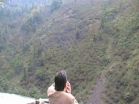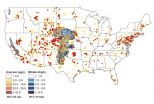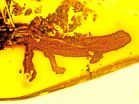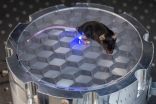(Press-News.org) Researchers from the Department of Energy's Pacific Northwest National Laboratory will be honored and present new work at the 250th American Chemical Society national meeting in Boston, Massachusetts, Aug. 16-20. Highlights include:
Energy Storage: Putting molecular hydrogen together and taking it apart
Storing electrical energy in chemicals and pulling it back out again to use for renewable energy requires inexpensive catalysts, which are molecules that can speed up the chemical reactions in either direction. PNNL researchers have been exploring the nuts and bolts of how catalysts do this for hydrogen fuel (talk number CATL 241), many of whom will be participating in a special one-and-a-half-day symposium. In recognition of work that draws inspiration from biological catalysts called hydrogenases (CATL 111, 236), ACS has awarded a PNNL-led team of researchers the ACS Catalysis Lectureship.
This is the first time this has been awarded to a team. Members of the PNNL-led hydrogen catalysis team will discuss developing catalysts using abundant metals rather than spendy ones such as platinum. They have explored in detail proton relays (CATL 74, 75), where complicated molecules surround the catalyst's metal center and relay positively charged protons in a route through the catalyst that guide negatively charged electrons-the energy-containing bits-into chemical bonds, or back out again. Branching out from hydrogen, other PNNL researchers have begun exploring related reactions that convert carbon dioxide (CO2) to formate (HCO2-) (CATL 117).
Reference: Various speakers, CATL 74-79, 111-117, 236-241: 2015 ACS Catalysis Lectureship, Monday, Aug. 17, 8:00 a.m. - 11:20 a.m., 1:00 p.m. - 4:45 p.m.; Tuesday, Aug. 18, 8:00 a.m. - 11:30 a.m., Atlantic Blrm 3 -- Renaissance Boston Waterfront.
Catalysis in zeolites imitating enzymes
Petroleum processing and industrial chemicals production use catalysts to convert raw materials into useful products such as gasoline or chemicals for various uses. Zeolite, a sieve-like material made of aluminum and silicon, is one of the most common catalysts, and chemists are eager to determine how to modify it to control chemical reactions of interest. Recently, researchers have been exploring how the rates and selectivity of chemical transformations in zeolites are determined by the chemical nature of the active site as well as the confined space around the sites, called the steric environment. PNNL chemist Johannes Lercher will discuss results that show how the nature of sites can be used to enhance reaction rates by directed interactions and by steric constraints-both principles common in biological systems.
Reference: Johannes Lercher, CATL 95: Influencing catalytic rates by tailoring steric constraints, Monday, Aug. 17, 8:35 a.m. - 9:20 a.m., Pacific Blrm A -- Renaissance Boston Waterfront.
The connection between plants, pollution, and aerosols
A large portion of secondary organic aerosols-tiny particles in the air we breathe that contribute to cloud formation and precipitation-arise from a combination of man-made pollution and molecules given off by plant matter. Researchers find that when these two sources work in consort they produce significantly more particles than expected. The mechanism behind this phenomenon remained a mystery for a long while. Based on laboratory experiments, PNNL chemist Alla Zelenyuk has found that manmade pollutants, like polycyclic aromatic hydrocarbons, also known as PAHs, can dramatically increase the number and mass of particles produced by plant-based alpha-pinene-the chemical that gives pine trees their scent. The effect is especially pronounced when alpha-pinene is low. A dash of pyrene added to a low concentration of alpha-pinene yields aerosols that are five times the mass, and 200 times as many, than that produced by alpha-pinene alone. Zelenyuk will discuss the chemical reactions that lead to these findings, direct evidence of the non-linear interactions between manmade pollution and natural airborne particles.
Reference: Alla Zelenyuk, PHYS 377: New experimentally-based secondary organic aerosol paradigm, Wednesday, Aug. 19, 1:30 p.m. - 2:00 p.m., Room 252B -- Boston Convention & Exhibition Center.
INFORMATION:
This work was supported by the Department of Energy Office of Science.
Interdisciplinary teams at Pacific Northwest National Laboratory address many of America's most pressing issues in energy, the environment and national security through advances in basic and applied science. Founded in 1965, PNNL employs 4,300 staff and has an annual budget of more than $1 billion. It is managed by Battelle for the U.S. Department of Energy's Office of Science. As the single largest supporter of basic research in the physical sciences in the United States, the Office of Science is working to address some of the most pressing challenges of our time. For more information on PNNL, visit the PNNL News Center, or follow PNNL on Facebook, Google+, LinkedIn and Twitter.
On the heels of President Barack Obama's trip to Kenya this summer, in which the U.S. president called on Kenya to overcome ethnic divisions, a new study provides insights into the economic cost of segregation in developing countries and how to overcome it.
The study, published in Administrative Science Quarterly, looks at how actors from diverse and competing social groups can come to identify as members of a common market.
In "Mobilizing a Market: Ethnic Segmentation and Investor Recruitment into the Nairobi Securities Exchange, University of Chicago Booth School ...
Researchers at the Ruhr-Universität Bochum have debunked the theory that the left brain hemisphere is dominant in the processing of all languages. To date, it has been assumed that that dominance is not determined by the physical structure of a given language. However, the biopsychologists have demonstrated that both hemispheres are equally involved in the perception of whistled Turkish. Onur Güntürkün, Monika Güntürkün and Constanze Hahn report in the journal "Current Biology".
Common theory: left hemisphere dominant in language perception
The ...
PROVIDENCE, R.I. - A study conducted by researchers at Hasbro Children's Hospital, Boston Children's Hospital, Fairfax (VA) County Public Schools and the University of Colorado School of Medicine has found that nationally mandated protective eyewear results in a greater than three-fold reduced risk of eye and orbital injuries in high school (HS) girls' field hockey players without increasing rates of concussion.
Each academic year, more than 64,000 girls participate in HS-sanctioned field hockey in the United States. Head, facial, and eye injuries are common among field ...
Generally speaking, language processing is a job for the brain's left hemisphere. That's true whether that language is spoken, written, or signed. But researchers reporting in the Cell Press journal Current Biology on August 17 have discovered an exception to this rule in a most remarkable form: whistled Turkish.
"We are unbelievably lucky that such a language indeed exists," says Onur Güntürkün of Ruhr-University Bochum in Germany. "It is a true experiment of nature."
Whistled Turkish is exactly what it sounds like: Turkish that has been adapted into ...
Health care is a major responsibility of Canada's federal government and must be a key issue in the fall election, argues Dr. Matthew Stanbrook in an editorial in CMAJ (Canadian Medical Association Journal).
"The federal government seems to be trying to get itself out of the health care business," states Dr. Stanbrook, deputy editor, CMAJ. "It cannot. Many essential aspects of health care are a federal responsibility, and our biggest, most complex problems in the health care system cannot be solved without federal leadership."
He argues that over most of the last 10 ...
Nearly 2 million people throughout the Great Plains and California above aquifer sites contaminated with natural uranium that is mobilized by human-contributed nitrate, according to a study from the University of Nebraska-Lincoln.
Data from roughly 275,000 groundwater samples in the High Plains and Central Valley aquifers show that many Americans live less than two-thirds of a mile from wells that often far exceed the uranium guideline set by the Environmental Protection Agency.
The study reports that 78 percent of the uranium-contaminated sites were linked to the ...
Philadelphia, PA, August 17, 2015 -- Peripherally inserted central catheters (PICCs), a type of IV typically inserted in a vein in the arm, are frequently used by healthcare professionals to obtain long-term central venous access in hospitalized patients. While there are numerous benefits associated with PICCs, a potential complication is deep vein thrombosis (DVT), or blood clots, in upper limbs. A new study of more than 70,000 patients in 48 Michigan hospitals indicates that PICC use is associated not only with upper-extremity DVT, but also with lower-extremity DVT. The ...
CORVALLIS, Ore. - More than 20 million years ago, a short struggle took place in what is now the Dominican Republic, resulting in one animal getting its leg bitten off by a predator just before it escaped. But in the confusion, it fell into a gooey resin deposit, to be fossilized and entombed forever in amber.
The fossil record of that event has revealed something not known before - that salamanders once lived on an island in the Caribbean Sea. Today, they are nowhere to be found in the entire Caribbean area.
The never-before-seen and now extinct species of salamander, ...
Irvine, Calif., August 17, 2015 - A woman's weight at birth, education level and marital status pre-pregnancy can have repercussions for two generations, putting her children and grandchildren at higher risk of low birth weight, according to a new study by Jennifer B. Kane, assistant professor of sociology at the University of California, Irvine. The findings are the first to tie social and biological factors together using population data in determining causes for low birth weight.
"We know that low-birth-weight babies are more susceptible to later physical and cognitive ...
A miniature device that combines optogenetics - using light to control the activity of the brain - with a newly developed technique for wirelessly powering implanted devices is the first fully internal method of delivering optogenetics.
The device dramatically expands the scope of research that can be carried out through optogenetics to include experiments involving mice in enclosed spaces or interacting freely with other animals. The work is published in the Aug. 17 edition of Nature Methods.
"This is a new way of delivering wireless power for optogenetics," said ...



